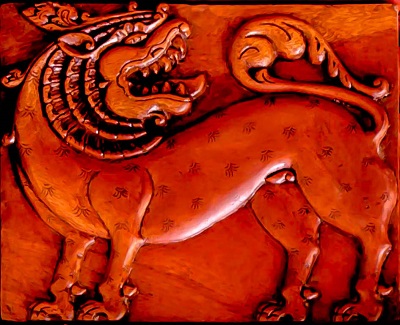The city of Kandy brings with it a rich history. Being the last capital of the Sinhalese kingdoms, it resisted foreign conquest for centuries before finally falling to the British in early 19th century. One of the most notable attractions in Kandy is the Esala Perahera which is a historic festival procession of colorful local dancers as well as elephants held for 10 days during July and August.
Aside from this, the Kandy area attracts visitors throughout the year and many of our guests use Kirinda Walauwa as a base from which they explore the nearby places of interest.
(Distances below are given from Kirinda Walauwa)
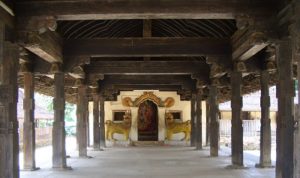 The Embekka Devalaya was built by the King Vikramabahu III of the Gampola Era in Sri Lanka. The devalaya is dedicated to the worship of Mahasen, popularly known as Kataragama deviyo. A local deity called Devatha Bandara is also worshiped at this site.
The Embekka Devalaya was built by the King Vikramabahu III of the Gampola Era in Sri Lanka. The devalaya is dedicated to the worship of Mahasen, popularly known as Kataragama deviyo. A local deity called Devatha Bandara is also worshiped at this site.
 The history of Lankatilaka goes back to pre-colonial times in Sri Lanka when king Buwanekabahu IV (1341-51) chose Gampola as his kingdom and constructed this with the assistance of a South Indian architect.
The history of Lankatilaka goes back to pre-colonial times in Sri Lanka when king Buwanekabahu IV (1341-51) chose Gampola as his kingdom and constructed this with the assistance of a South Indian architect.
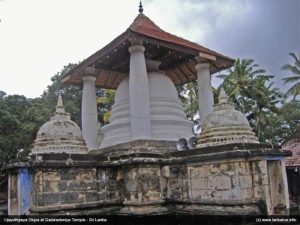 The Gadaladeniya Rajamaha Viharaya is an ancient monastery that is found on the flat rock at Diggala. According to an inscription, the temple was built by king Buwanekabahu IV in 1344.
The Gadaladeniya Rajamaha Viharaya is an ancient monastery that is found on the flat rock at Diggala. According to an inscription, the temple was built by king Buwanekabahu IV in 1344.
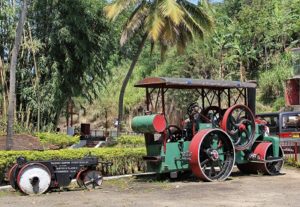 Sri Lanka’s first highway museum is in Kiribathkumbura, Kandy and is maintained by the Road Development Authority of Sri Lanka. There is a collection of construction equipment such as various road rollers, boilers, road signs, etc. and some of the items are reported to be well over 150 years old.
Sri Lanka’s first highway museum is in Kiribathkumbura, Kandy and is maintained by the Road Development Authority of Sri Lanka. There is a collection of construction equipment such as various road rollers, boilers, road signs, etc. and some of the items are reported to be well over 150 years old.
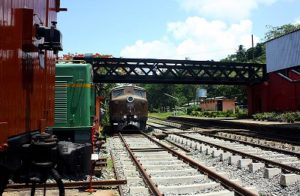 The museum was opened in 2014 to commemorate the 150th anniversary of railway service in Sri Lanka. It consists of old engines, locomotives, rail cars, trolleys, carriages, machinery and equipment that had been used since the beginning of Sri Lanka Railway.
The museum was opened in 2014 to commemorate the 150th anniversary of railway service in Sri Lanka. It consists of old engines, locomotives, rail cars, trolleys, carriages, machinery and equipment that had been used since the beginning of Sri Lanka Railway.
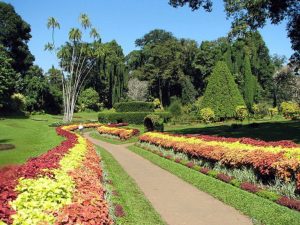 The Botanic Gardens at Peradeniya date back to the royal period of the 14th century are located next to the Mahaweli river which is the longest in the country. It’s a 147 acre area that houses over 4000 species of plants (most notably its collection of orchids) and attracting 2 million visitors annually.
The Botanic Gardens at Peradeniya date back to the royal period of the 14th century are located next to the Mahaweli river which is the longest in the country. It’s a 147 acre area that houses over 4000 species of plants (most notably its collection of orchids) and attracting 2 million visitors annually.
Visiting Hours: 7:30am – 6:00pm
Extra Reading – Wikipedia
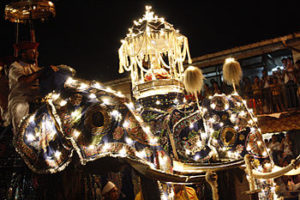 The Kandy Esala Perahera is a grand seasonal festival full of colour, history and excitement. Usually held during the months of July and August and lasting 10 days, the exact dates and timing are determined by astrological advisors. A cultural event not to be missed , it features the famous decorated elephants carrying ceremonial sacred caskets as well as various types of local cultural dancers including fire dancers and whip dancers with the procession attracting a large audience as it goes right through the Kandy city.
The Kandy Esala Perahera is a grand seasonal festival full of colour, history and excitement. Usually held during the months of July and August and lasting 10 days, the exact dates and timing are determined by astrological advisors. A cultural event not to be missed , it features the famous decorated elephants carrying ceremonial sacred caskets as well as various types of local cultural dancers including fire dancers and whip dancers with the procession attracting a large audience as it goes right through the Kandy city.
Seasonal event – July/August
Extra Reading – Wikipedia
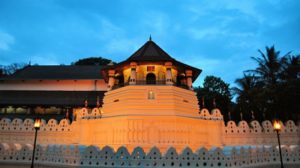 Being one of the most visited places in the country, the Sri Dalada Maligawa or the Temple of the Sacred Tooth Relic is a Buddhist temple in the city of Kandy and is a UNESCO World Heritage site. It is located in the royal palace complex of the former Kingdom of Kandy, which houses the relic of the tooth of the Buddha.
Being one of the most visited places in the country, the Sri Dalada Maligawa or the Temple of the Sacred Tooth Relic is a Buddhist temple in the city of Kandy and is a UNESCO World Heritage site. It is located in the royal palace complex of the former Kingdom of Kandy, which houses the relic of the tooth of the Buddha.
Visiting Hours: 6am to 8pm
Notes: On top of the ticket prices, there would be charges for photography and videography.
Extra Reading – Wikipedia
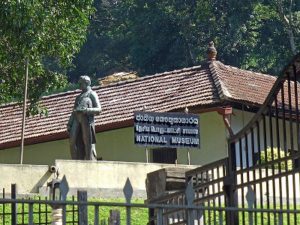 The national museum in kandy historically was the king’s harem during the era of king Sri Wickrama Rajasinghe. It now holds over 5,000 items showing historical and cultural significance of that era in the country. This includes the building itself which depicts the architecture of Kandy’s royal period.
The national museum in kandy historically was the king’s harem during the era of king Sri Wickrama Rajasinghe. It now holds over 5,000 items showing historical and cultural significance of that era in the country. This includes the building itself which depicts the architecture of Kandy’s royal period.
Udawatta Kele is a 257 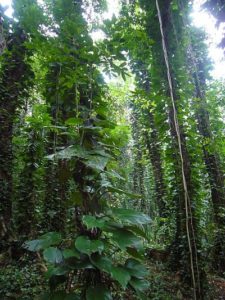 acre (104 hectare) forest sanctuary located on a hill ridge behind the Temple of the Tooth. It is home to over 400 plant species and 80 species of birds can be spotted here as well. The Government declared it a forest reserve in 1856 however there are some temples and hermitages that can be found within the sanctuary as there have been small settlements in the area since the 13th century.
acre (104 hectare) forest sanctuary located on a hill ridge behind the Temple of the Tooth. It is home to over 400 plant species and 80 species of birds can be spotted here as well. The Government declared it a forest reserve in 1856 however there are some temples and hermitages that can be found within the sanctuary as there have been small settlements in the area since the 13th century.
Visiting Hours: 7:00am – 6:00pm
Extra Reading – Wikipedia
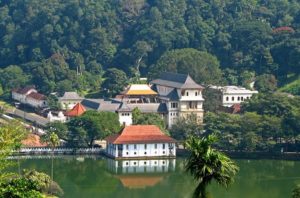 Kandy Lake, also known as Kiri Muhuda or the Sea of Milk, is an artificial lake in the heart of the hill city of Kandy. Found next to the Temple of the Tooth, it was built in 1807 by King Sri Wickrama Rajasinghe the last ruler of the kingdom of Kandy and has tragic history associated with it. Several minor local chiefs protested because their people objected to laboring on the project. In order to stop the protests they were put to death on stakes in the lake bed. The central island was used as Sri Wickrama Rajasinha’s personal harem. Later the British used it as an ammunition store and added the fortress-style parapet around the perimeter.
Kandy Lake, also known as Kiri Muhuda or the Sea of Milk, is an artificial lake in the heart of the hill city of Kandy. Found next to the Temple of the Tooth, it was built in 1807 by King Sri Wickrama Rajasinghe the last ruler of the kingdom of Kandy and has tragic history associated with it. Several minor local chiefs protested because their people objected to laboring on the project. In order to stop the protests they were put to death on stakes in the lake bed. The central island was used as Sri Wickrama Rajasinha’s personal harem. Later the British used it as an ammunition store and added the fortress-style parapet around the perimeter.
Visiting Hours: 8:30am – 6:00pm
Extra Reading – Wikipedia
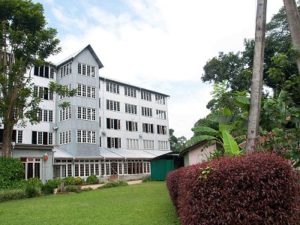 The museum consists of 4 floors of which 2 floors consist of old machinery used for industrial tea manufacture. There is a sales outlet as well as a café where visitors can sample tea.
The museum consists of 4 floors of which 2 floors consist of old machinery used for industrial tea manufacture. There is a sales outlet as well as a café where visitors can sample tea.
Visiting Hours: 8:30am – 3:30pm (Tuesday – Sunday)
Extra Reading – Tea Museum Website
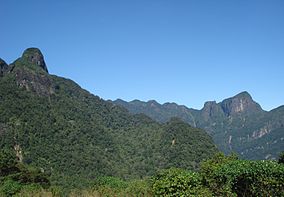 The Knuckles mountain range, whose name comes due to its resemblance of the knuckles of a clenched fist, is one of the country’s last untouched natural reserves. Trekking is especially a favorite here, with guides and experts available who help travelers during the course of their trek. The entire area above 1,000 m is now considered a World Heritage Conservation Area. In addition to it being a good trek, it is also a beautiful place to cycle as well.
The Knuckles mountain range, whose name comes due to its resemblance of the knuckles of a clenched fist, is one of the country’s last untouched natural reserves. Trekking is especially a favorite here, with guides and experts available who help travelers during the course of their trek. The entire area above 1,000 m is now considered a World Heritage Conservation Area. In addition to it being a good trek, it is also a beautiful place to cycle as well.
Extra Reading – Tripadvisor
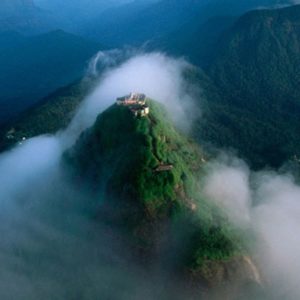
Adams Peak is a mountain in the central province that is well known for a sacred footprint having significance to Buddhist, Christian, Hindu and some Muslim traditions and attracts both visitors as well as pilgrims who come to pay homage to the compound built on top of the small plateau. Due to better weather conditions, the mountain gets most visitors between December and May.
Extra Reading – Wikipedia
